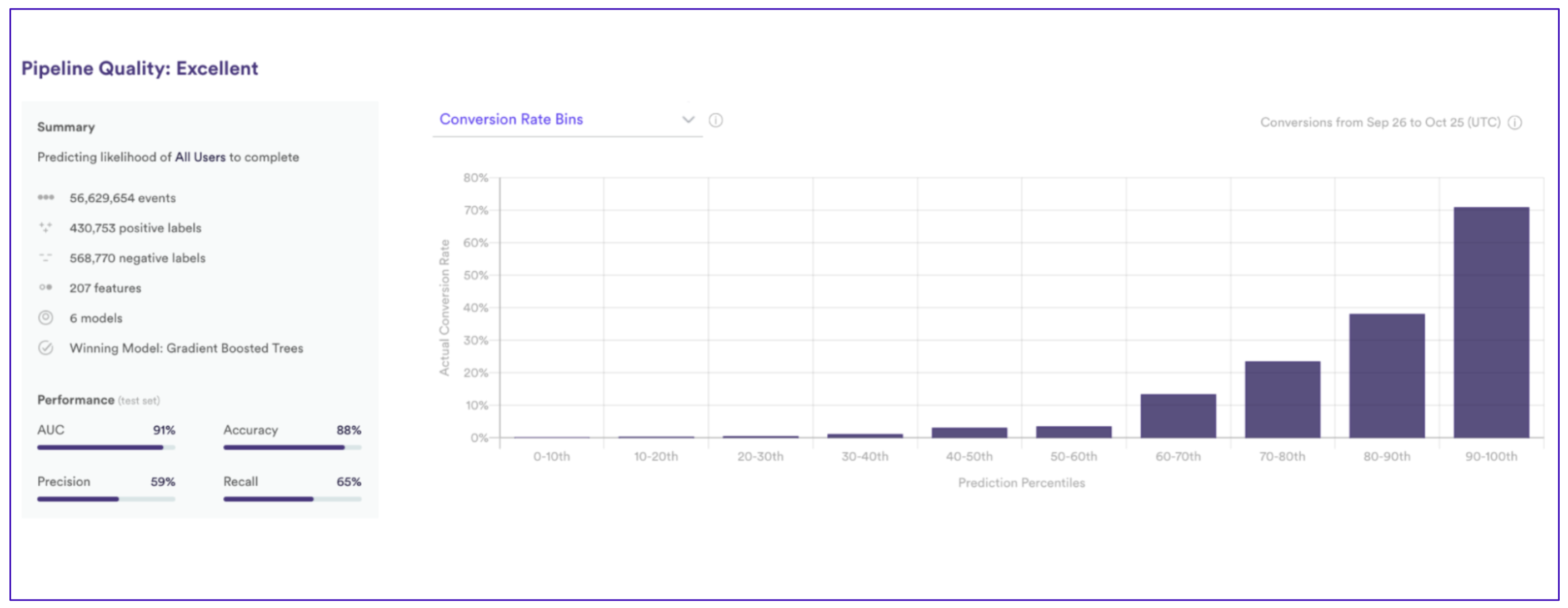The Results:
Reduction in User Churn

Reduction in User Churn
A leading digital commerce company noted that a large number of their customers were churning and not returning the service after a purchase. In order to increase customer lifetime value (CLV) and offset customer acquisition costs (CAC) the commerce company set an aggressive target around reducing churn. The marketing team decided that a primary mechanism for reducing churn would be to leverage digital offers which incentivized return users with discounts on commerce items. However, the marketing team wanted to ensure that these offers were only sent to users where the offer would make a difference in terms of retention. For instance, sending coupons to users who would otherwise purchase would impact top-line revenue.
When attempting to reduce churn using the team ran into several challenges –
The team first used Cortex to determine whether users likely to churn could be identified at all for the raw 1st party data.
The digital commerce company sent behavioral, purchase, and marketing data to Cortex on an ongoing basis.

Next the team built pipelines which predicted which users were likely to churn. In the process Cortex created various automate features across the behavioral data including grouping behaviors across dozens of time-windows and building the most valuable features for predicting retention. The pipeline performed well with a high AUC and Precision score. Note because there was no explicit churn event, the pipeline created predicted whether a user was likely to be active in the next 60 days. Users deemed not likely to be active were deemed as likely to churn.

Cortex snapshot on how to build a pipeline to predict user churn for a B2C digital commerce site. Note that the business is predicting which users are likely to have any activity over the next 60 days.

Cortex snapshot of a future events pipeline which predicts the likelihood of a user to be retained on a B2C digital commerce site.
Next the digital commerce company needed to action on the predictions from the machine learning pipelines in order to reduce churn. As is often the case, predicting who will churn is quickly followed by prescriptive approaches to proactively reducing churn. In this, Cortex was used by the marketing analytics team to decide which users should receive a coupon based on their churn propensity score. The marketing analytics team specified users in the 50-80% likely to churn range as being the best targets to receive a coupon.

The output of a machine learning pipeline is a prediction which, in order to reduce churn, must be transformed into a business decision.
The team also specified a recurring prediction to be made every day and sent into their CRM (Salesforce.com) automatically using Cortex.
Note that the team is planning on enhancing the targeting of offers using prescriptive models (like Uplift Modeling available in Cortex) for their next iteration. Uplift Modeling will convey which user’s churn propensity will decrease the most if they receive a coupon.

By targeting users who were between 50-80% likely to churn with offers the team was able to reduce churn by 5%. Not only was the team able to reduce churn, but they also did send offers to users who were very likely to purchase again and thus did not negatively impact top-line revenue.